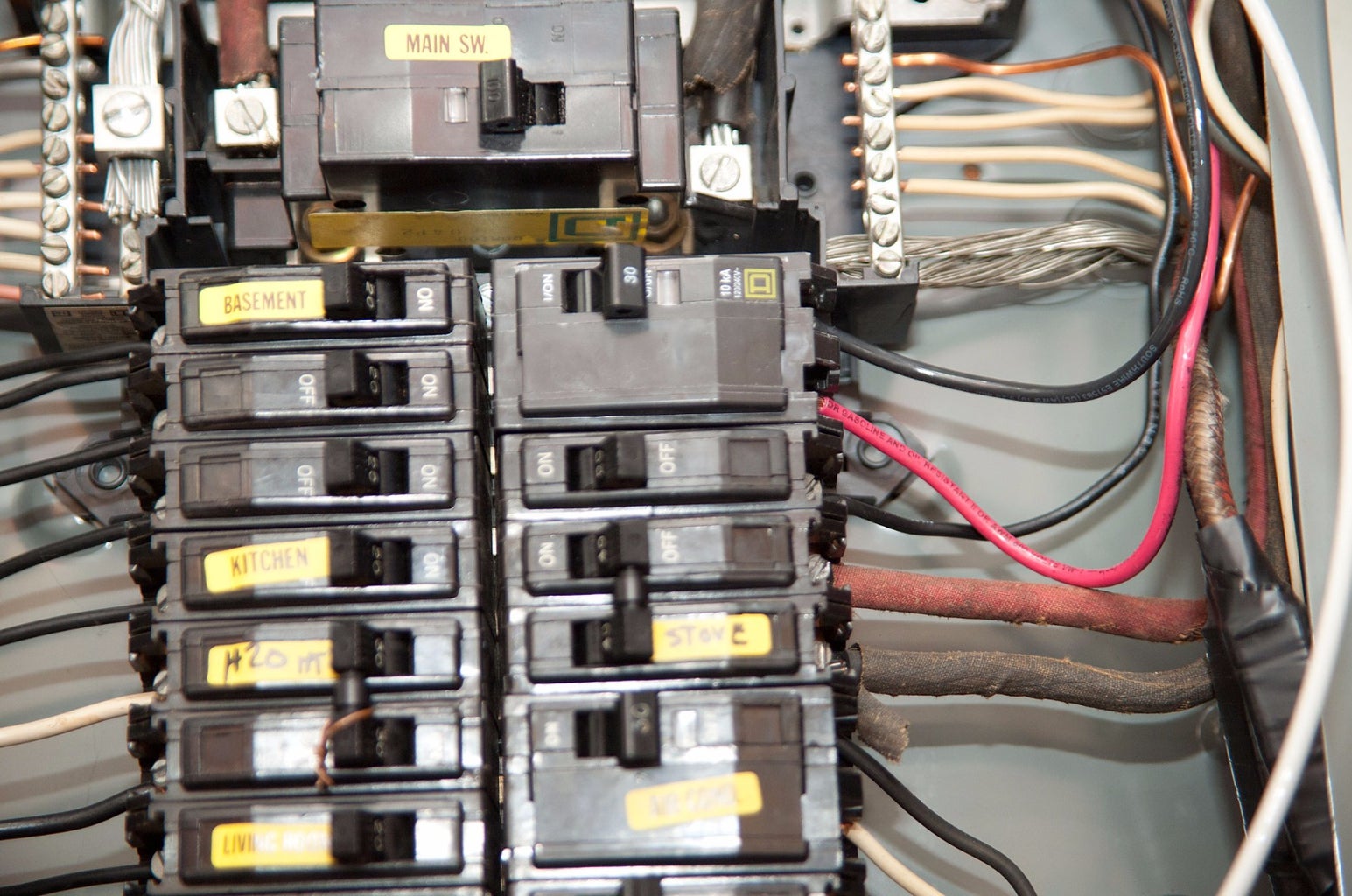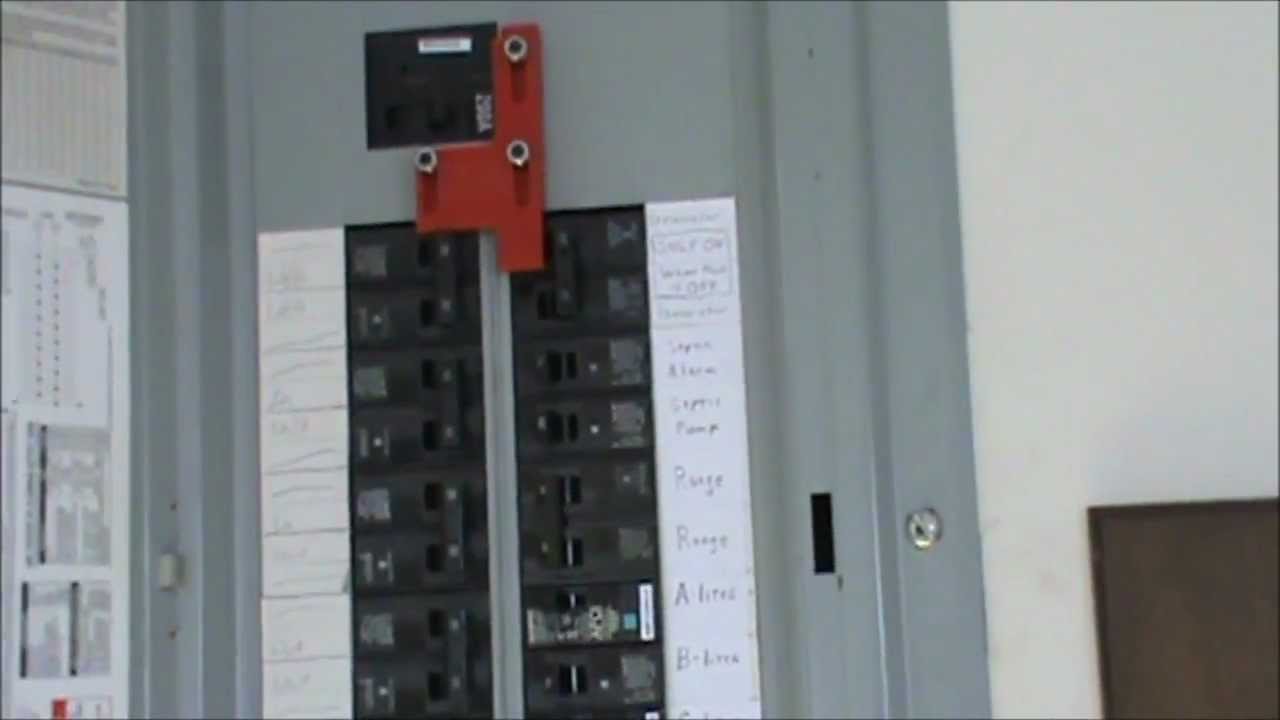To connect a portable generator to an electrical panel, use a transfer switch or safety interlock system installed by a licensed electrician to ensure safe and proper connection. The generator should never be directly connected to the circuit breaker panel or a home electrical outlet.
Connecting A Portable Generator Safely
Learn how to safely connect a portable generator to your electrical panel with these helpful tips and instructions. By using a transfer switch or safety interlock system, you can ensure a proper connection that won’t put your home or electrical system at risk.
Say goodbye to power outages and enjoy peace of mind with a reliable generator setup.
Why It’s Important To Connect A Portable Generator Safely
Ensuring the safety of your home and family should be the top priority when connecting a portable generator. Understanding the potential dangers of improper connections is crucial, as it can lead to electrocution, electrical fires, or damage to your generator or electrical panel.
| Recommended Steps: |
|---|
| 1. Use a UL Listed transfer switch or safety interlock system to connect the generator to your electrical panel. It is important to hire a licensed electrician for this installation. |
| 2. Never connect the generator directly to a home electrical outlet or the circuit breaker panel. This can cause backfeeding, which poses a serious risk to utility workers and can damage your generator. |
| 3. Attach the ground wire to the ground bus bar and the neutral wire to the neutral bus bar in your electrical panel. Securely connect the two hot wires to the circuit breaker. |
| 4. If you plan to connect the generator to the grid, install an interlock system to prevent simultaneous connection to the utility power. |
| 5. Never overload the generator beyond its rated capacity. Make sure to adhere to the manufacturer’s instructions and safety guidelines at all times. |
| 6. Regularly inspect your generator for any wear or damage, and ensure it is properly maintained. |
By following these recommendations, you can safely connect your portable generator to your electrical panel, ensuring reliable backup power without compromising the safety of your home and loved ones.
Necessary Equipment And Preparations
To connect a portable generator to an electrical panel, you’ll need the necessary equipment and preparations. Start by attaching the ground wire to the ground bus bar, the neutral wire to the neutral bus bar, and the two hot wires to the circuit breaker.
Additionally, use a transfer switch or safety interlock system for a safe and proper connection. Avoid connecting the generator directly to the circuit breaker panel or home electrical outlet.
| Necessary Equipment and Preparations |
| Transfer switches and safety interlock systems |
| UL Listed equipment is essential for safe connections when connecting a portable generator to an electrical panel. It is important to use a transfer switch or a safety interlock system to ensure proper electrical flow and prevent backfeeding. These devices are designed to protect your generator, your electrical panel, and your home from potential hazards such as electrical overload and electrocution. A licensed electrician should be hired to install these UL Listed devices to your electrical panel to ensure proper installation and compliance with local electrical codes. Additionally, it is important to have the necessary tools and materials for the installation, such as cables, connectors, grounding rods, and appropriate safety equipment. |
Step-by-step Guide To Connecting A Portable Generator
| How to Connect a Portable Generator to Electrical Panel |
Step-by-Step Guide to Connecting a Portable Generator:
- Identifying the main electrical panel in your home: Locate the main electrical panel where the circuit breakers are housed. This is usually found in the basement, garage, or utility room.
- Installing an inlet for the generator connection: Install an inlet on the exterior of your house to provide a safe and convenient connection point for the generator. This will allow you to easily connect the generator to the electrical panel.
- Connecting the ground and neutral wires: Attach the ground wire to the ground bus bar and the neutral wire to the neutral bus bar in the electrical panel. This will ensure proper grounding and safe operation.
- Safely connecting the hot wires to the circuit breaker: Connect the two hot wires from the generator to the circuit breaker in the electrical panel. Make sure to follow the manufacturer’s instructions and local electrical codes to ensure a secure and reliable connection.
Safety Measures And Best Practices
Learn the best practices for connecting a portable generator to your electrical panel to ensure safety. Use a transfer switch or safety interlock system installed by a licensed electrician for a secure connection. Avoid directly connecting the generator to the circuit breaker panel or home electrical outlet.
Faqs About Connecting A Portable Generator To Electrical Panel
Connecting a portable generator to an electrical panel is a useful solution for backup power during emergencies. However, there are some frequently asked questions surrounding this topic:
- Can a portable generator be connected to a subpanel for backup power? Yes, it is possible to connect a portable generator to a subpanel for backup power. This allows you to power specific circuits in your home.
- How to properly connect a portable generator to multiple panels? The best way to connect a portable generator to multiple panels is by using an inlet and an interlock system. A licensed electrician can install a UL Listed transfer switch or safety interlock system to your electrical panel.
- Is it safe to connect a generator to the electrical panel? Generators should never be directly connected to a home electrical outlet or circuit breaker panel. This can cause backfeeding and pose a serious safety hazard. It is important to use a proper transfer switch or safety interlock system.
- What is the best way to hook up a portable generator to your house? The best way to hook up a portable generator to your house is by using a transfer switch or safety interlock system. This ensures that the generator is safely connected and prevents backfeeding.

Credit: www.instructables.com
Frequently Asked Questions On How To Connect A Portable Generator To Electrical Panel
Can You Connect A Portable Generator To A Breaker Panel?
Yes, you can connect a portable generator to a breaker panel. However, it should be done using a transfer switch or a safety interlock system installed by a licensed electrician. Never connect the generator directly to the circuit breaker panel.
This ensures safety and prevents damage to the electrical system.
Is It Safe To Connect A Portable Generator To Electrical Panel?
Connecting a portable generator directly to an electrical panel is not safe. Generators should not be plugged into home outlets or directly connected to the circuit breaker panel. To safely connect a generator to your electrical panel, you should hire a licensed electrician to install a UL Listed transfer switch or safety interlock system.
What Is The Best Way To Hook Up A Portable Generator To Your House?
To connect a portable generator to your house, follow these steps: Firstly, install a transfer switch or safety interlock system to your electrical panel using a licensed electrician. Then, attach the generator’s ground and neutral wires to their respective bus bars.
Finally, connect the two hot wires to a circuit breaker. Ensure that the generator is never connected directly to an outlet or the circuit breaker panel for safety purposes.
Can I Connect A Portable Generator To My Home’s Electrical Panel?
No, it is not safe to directly connect a portable generator to your home’s electrical panel. Generators should never be connected to a home electrical outlet or the circuit breaker panel. It is essential to use a Transfer Switch or Safety Interlock System installed by a licensed electrician to connect the generator to your electrical panel.
Conclusion
To connect a portable generator to your electrical panel, it’s important to follow the proper steps for a safe and efficient hookup. Begin by attaching the ground wire to the ground bus bar and the neutral wire to the neutral bus bar.
Then, connect the two hot wires to the circuit breaker. Remember to use all four wires, including the hots, neutral, and ground, and avoid connecting the generator directly to the circuit breaker panel or a home electrical outlet. Instead, use a transfer switch or safety interlock system installed by a licensed electrician for a secure connection.
By following these guidelines, you can ensure a reliable power source during those times when you need it the most.

